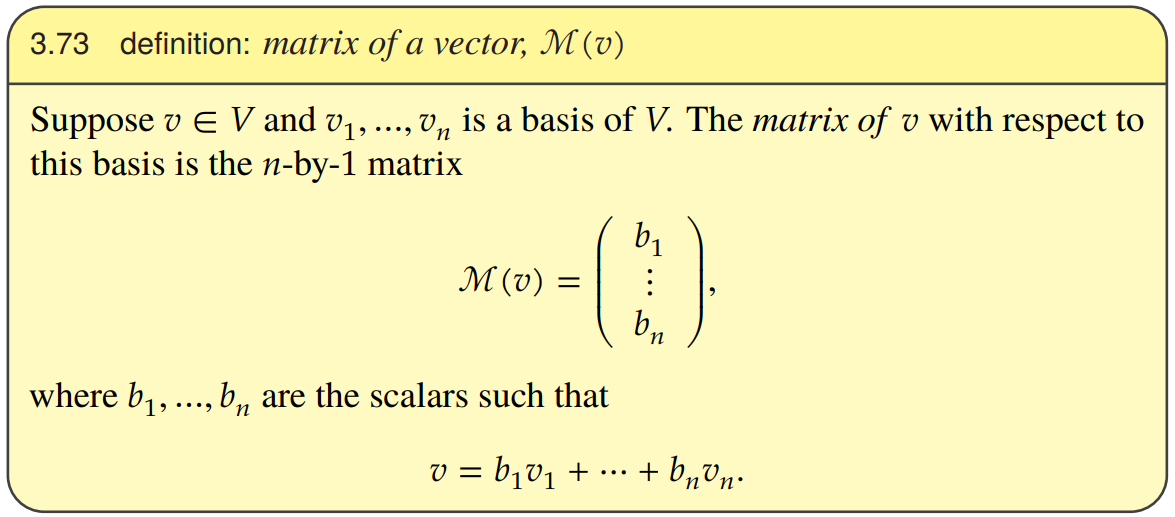Invertible Linear Maps
Definition
- A linear map is called invertible if there exists a linear map (in the opposite direction) such that equals the identity operator on and equals the identity operator on
- A linear map such that and is called the inverse of .
The inverse is unique
An invertible linear map has an unique inverse Proof
- Assume and are both inverses of
- then:
Notation
The inverse of a map is denote
Example
Find the inverse of The inverse of the map is
Conditions
A linear map is invertible it is injective and surjective (bijective) Proof: #todo if you want to spend time on this proof later.
Injectivity is equivalent to surjectivity
Suppose that and are finite-dimensional vector spaces, , and . Then:
Proof:
- as we know that T is invertible iff it is bijective, we just need to show the remaining two imply each other
- Assume is injective. Then we have the following:
- We can then write this in terms of the range, which we have to show is equivalent to
- Assume is surjective
- Then we need to prove that is {0}
Example Question
Prove that there exists a polynomial such that #todo if you want to later, show that its injective, there is a max degree so the dimentions of the two map are equal,
Another same dimention proof
Suppose and are finite dimensional vector spaces of the same dimension, and , then .
Isomorphism definition
- An isomorphism is an invertible linear map (which is a bijective linear map)
- Two vectors are isomorphic if there is an isomorphism from one vector space to the other one We use isomorphism to emphasize that two vector spaces are essentially the same.
Isomorphism condition
Two dimensional vector spaces over F are isomorphic they have the same dimension. #todo do this proof before you sleep, utilize the fundamental theorem of linear maps. Also define a map from the basis to basis.
By the condition above, you can note that any finite dimensional vector space is isomorphic to , is isomorphic to .
Additionally, lets say and . Then, for some we can show that is isomorphic to .
is isomorphic to
Suppose is a basis of and is a basis of . Then is an isomorphism between and #todo prove
Dim of
From previous proofs,
Matrix of a vector
 Just the scalers of thje linear combination
Just the scalers of thje linear combination